These words, echoed from the rooftop of Roomy Dastan Hotel, marked the beginning of another adventure. After days of exploring the valleys of Hunza and Chapursan, it was time to move on — to a place that, for me, holds an even deeper affection: the Ghizer Valley, the emerald corridor that leads to the serene Phander Lake.
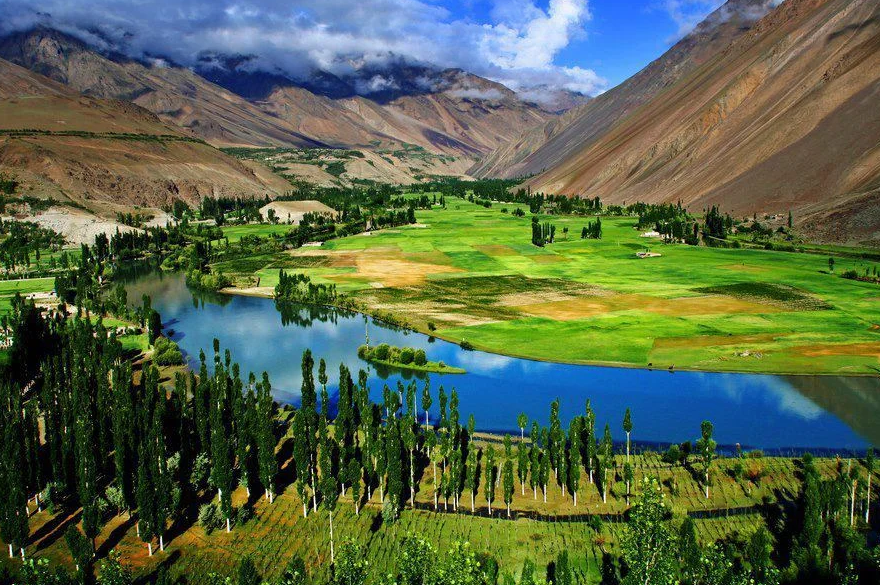
The morning air was cool, carrying the faint aroma of apricot blossoms from nearby gardens. The rooftops of Karimabad glistened under a soft drizzle. Down below, the bazaar was slowly coming to life — tourists haggling for souvenirs, locals chatting over steaming cups of chai, and the mountains, as always, standing like guardians over the town.
Breakfast was simple but hearty — parathas, eggs, and a warm cup of tea. We knew we had a long day ahead. Our destination for the night: Khalti Lake, with a hopeful plan to continue to Phander the next day.
As I looked at the mountains of Hunza one last time, a thought crossed my mind — the journey ahead was not just about reaching a place. It was about revisiting memories, discovering new perspectives, and finding beauty in every mile between.
A Walk Through the Streets of Karimabad
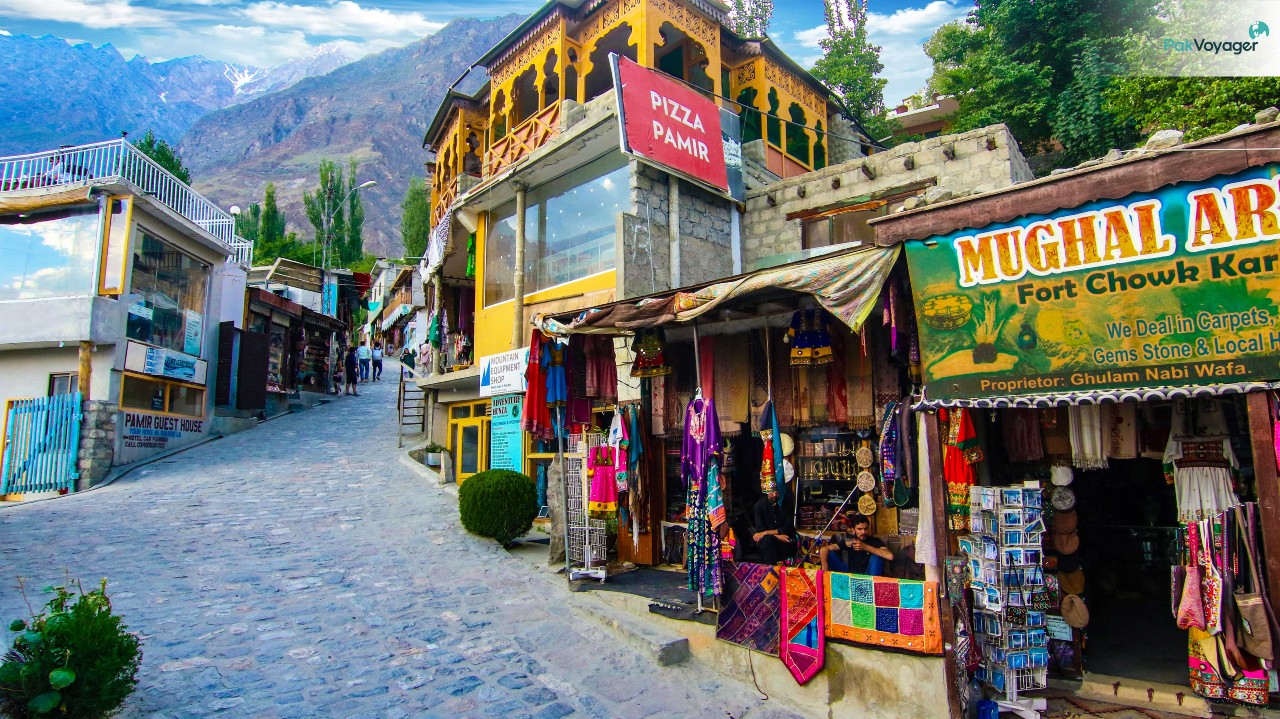
Before leaving Hunza, we decided to take a short walk through Karimabad Bazaar — the cultural heart of the valley.
Colorful shops lined both sides of the narrow cobblestone street. Handcrafted shawls, gemstones from the mountains, carved wooden utensils, and trinkets made from apricot pits filled the shelves. The aroma of freshly brewed coffee drifted through the air.
We made our way to Cafe de Hunza, a place every traveler in the north seems to visit at least once. It’s one of those rare establishments that has become part of Hunza’s identity.
Their coffee was as good as ever — strong, aromatic, and comforting in the chilly air. The famous walnut cake, however, sparked a small debate between us. I found it a little dry; Ali said it was average; Yasir, on the other hand, loved it.
“Well,” I laughed, “I guess everyone should come here and decide for themselves.”
The bill — PKR 1300 for one coffee, one cake, a bottle of water, and a juice — wasn’t bad for a café perched in the clouds.
When we stepped out, a light drizzle had begun, painting the mountains in misty hues of grey and green. It was going to be a rainy ride — and that made it even more exciting.
Through Rain and Mist: Leaving Hunza Behind
As raindrops sparkled on our helmets, we rolled out of Karimabad. The tires hissed softly on the wet road. “Bismillah,” I whispered — In the name of Allah.
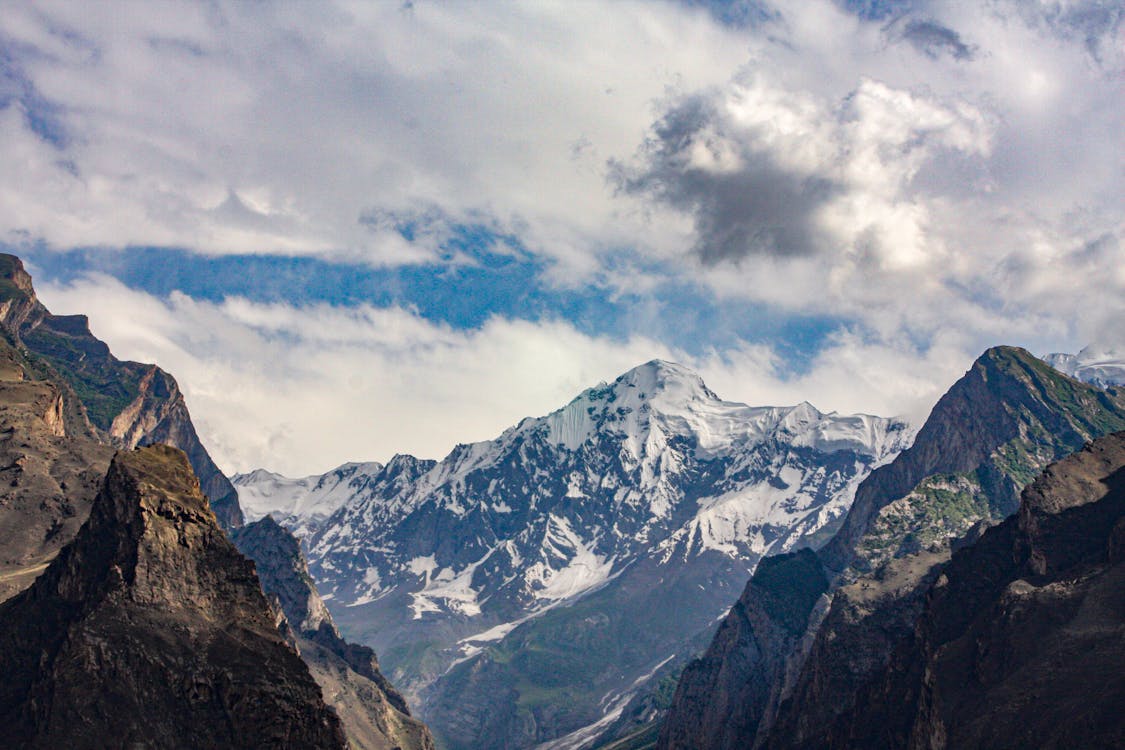
The road curved gently along the Hunza River. On one side were apricot orchards and terraced fields; on the other, a roaring river filled with glacier melt. The view of Nagar’s snow-capped peaks loomed closer than usual — white ridges dusted with fresh snowfall that glistened like powdered sugar.
Somewhere near Aliabad, we stopped to refuel and get engine oil for Ali’s motorcycle. It was still drizzling, so we put on our rain gear before continuing toward Gilgit.
A Chance Encounter: Meeting Abrar on the Road
Just as we were about to leave Aliabad, a familiar figure appeared in the distance — Abrar, a fellow traveler and content creator, someone we had long wanted to meet in person.
“Assalam Alekum, Abrar!” I called out, smiling.
The meeting was brief but warm — a typical mountain encounter where time doesn’t matter, but connection does. We exchanged a few words about future plans. He mentioned his wish to travel to Leh Ladakh and Kashmir, if he could secure the Indian visa again.
After some laughter and shared travel stories, we shook hands and parted ways. “Safe travels,” we said to each other, before disappearing into the mist.
The Road to Gilgit: Rivers and Rains
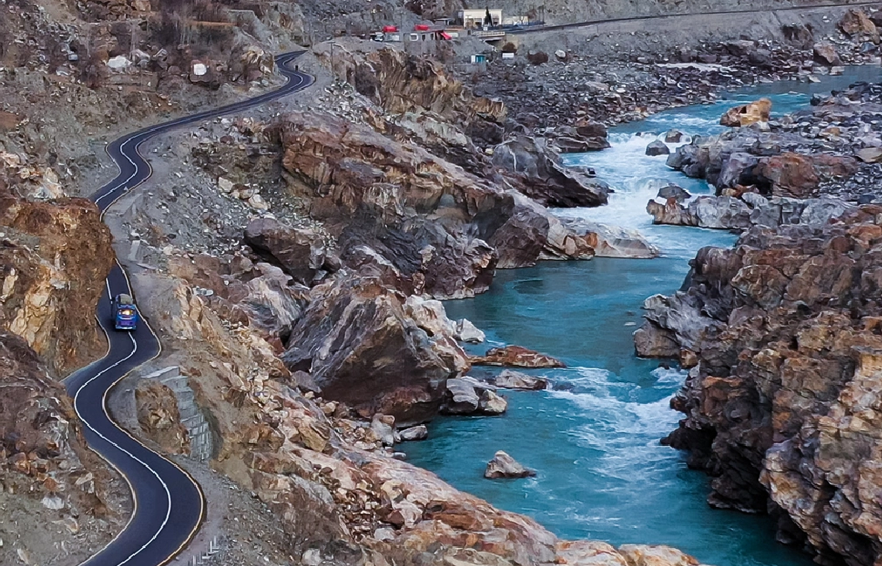
As we descended from Hunza, the rain began to ease, revealing streaks of sunlight piercing through the clouds. The Hunza River raged below, swollen by the monsoon rains and glacial runoff.
“The water is coming down the glacier with such force,” I said into the mic. “And it’s bringing with it a cool, refreshing wind.”
Along the way, we saw the remains of a bridge destroyed during last year’s floods — now replaced by a temporary one. Nature’s power is evident everywhere in these valleys. One moment, a river nourishes the land; the next, it devours it.
After about 90 minutes of riding, we reached Danyor, a small town just outside Gilgit. We decided to stop for a milkshake, partly to rest, partly to say goodbye to Yasir, who had been traveling with us for the past ten days.
Farewell to a Fellow Rider
Under the shade of a roadside stall, we shared milkshakes and memories. Yasir had joined us all the way from Medina, and though he claimed he wasn’t tired, his smile said otherwise.
“I told you you’d get exhausted traveling with us,” I teased. “We don’t just travel — we film, we explore, we stop everywhere!”
He laughed. “I’m not tired. I just have to go back to work.”
We shook hands, promising to meet again on another road, another journey. Yasir turned his bike toward Naran while we continued west, toward Ghizer Valley.
Into Ghizer Valley: A Hidden Jewel
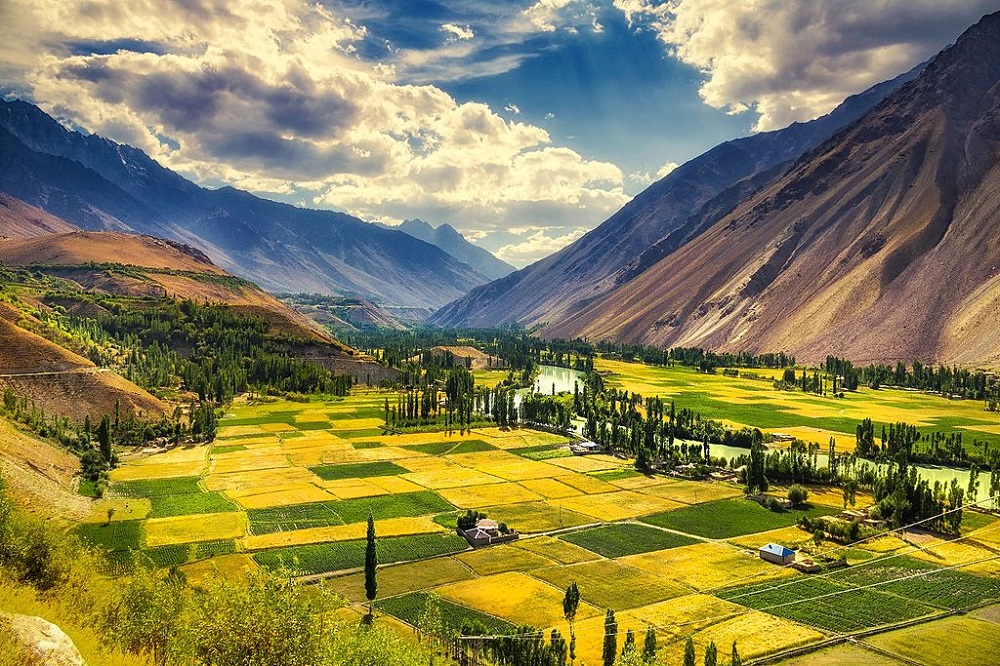
Once we crossed Gilgit’s main bazaar, the traffic thinned out. The landscape began to change — lush green fields stretched out on both sides, dotted with walnut and apricot trees. The mountains turned steeper, their slopes barren but dramatic.
“You’ll now begin to see the beauty of Ghizer Valley,” I told the camera as the sun peeked through the clouds.
This valley is one of Pakistan’s best-kept secrets — a place where turquoise rivers weave through green pastures, and every bend in the road hides a postcard-perfect view.
Sadly, it remains underdeveloped compared to Hunza or Skardu. There are few hotels, no big resort chains, and the roads, though scenic, are rough in places. But perhaps that’s what keeps its charm intact — it’s still raw, untouched, and real.
Sherqilla: Where Water Meets Green
We stopped at Sherqilla, one of the most beautiful villages in Ghizer. Lush green fields lay beneath snow-dusted mountains. Streams from nearby glaciers ran through the village, feeding the crops.
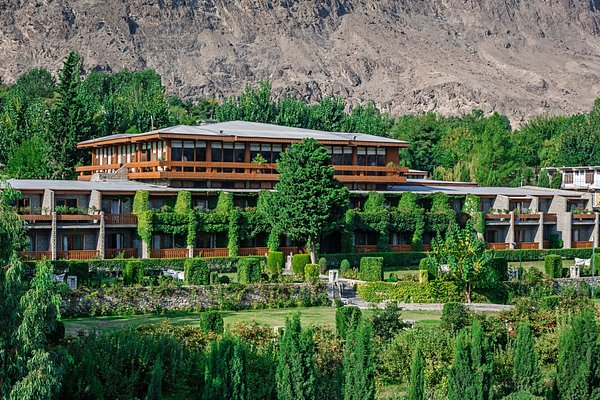
“How beautiful that water looks,” Ali said as we watched the silver streams rushing over rocks.
Every few kilometers, we crossed an old suspension bridge — the kind made of wood and steel cables that sway gently as you cross. These bridges, though fragile-looking, have connected these valleys for decades.
We rode past fields where farmers were busy harvesting wheat. The rhythm of sickles slicing through golden stalks echoed in the cool air. Life here moves at its own pace — steady, content, unbothered by the world beyond the mountains.
A Pause on the Road: Tea and Fries
Construction work on the main road forced us to stop for a couple of hours. But mountain delays are never a problem if you have good company.
Ali brewed tea using his portable stove and shared a plate of fries we had picked up earlier. The drizzle had stopped, and mist curled up from the valley floor like smoke from an invisible fire.
“This,” I thought, “is why I travel. For moments like these — when time slows down, and the journey itself becomes the destination.”
Reaching Gahkuch: The Heart of Ghizer
When the road reopened, we rode for another hour and reached Gahkuch, the largest town between Gilgit and Phander. The town sits where the river widens into a delta-like landscape — a mix of marshlands, meadows, and crystal-clear water channels.
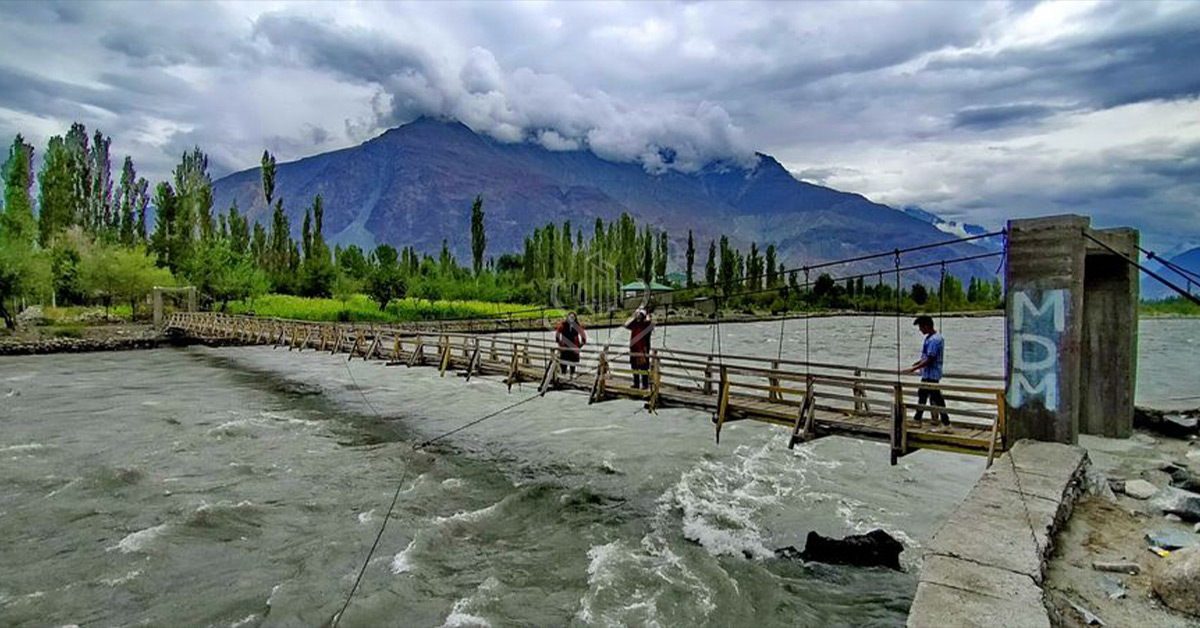
Children were playing along the riverbanks. The air was filled with the laughter of locals and the distant clang of tin roofs being repaired after the rains.
We met a group of bikers from Multan, cheerful and excited to see fellow travelers. One of them recognized us from our vlogs and came forward, smiling. “Thank you so much, Abrar! I’m so excited to see you!”
It’s humbling to realize how travel connects hearts, even among strangers.
Gupis: Where the Rivers Whisper
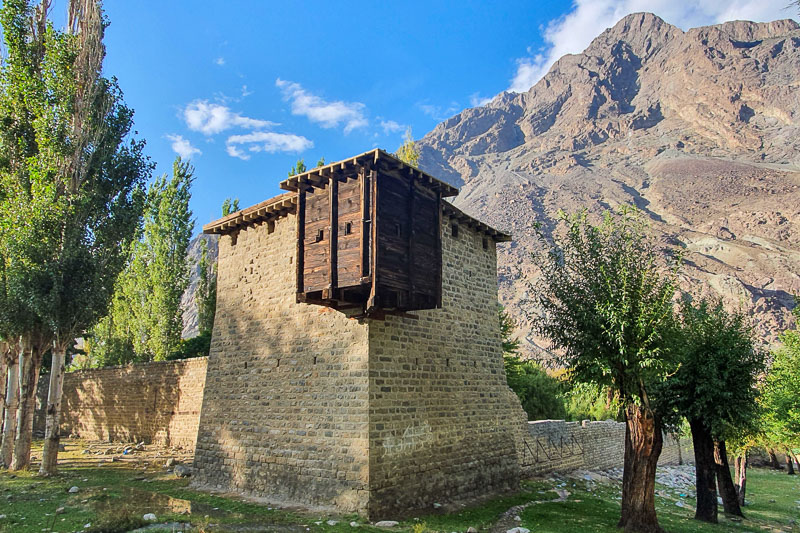
Beyond Gahkuch, the road winds through smaller villages, eventually leading to Gupis, another serene settlement along the Ghizer River. The landscape here is more open — wide valleys flanked by high cliffs, dotted with houses and poplar trees.
The water shimmered in the evening light, and we stopped briefly to admire it. A small bridge led towards Yasin Valley, a place we planned to visit the next day — if the roads allowed.
Khalti Lake: A Memory Faded, Yet Beautiful
By the time we reached Khalti, the sky had turned orange. This was the place I had been most excited to revisit — a lake I remembered vividly from my trip three years ago. Back then, the river and lake water were turquoise blue, so clear that you could see the stones at the bottom.
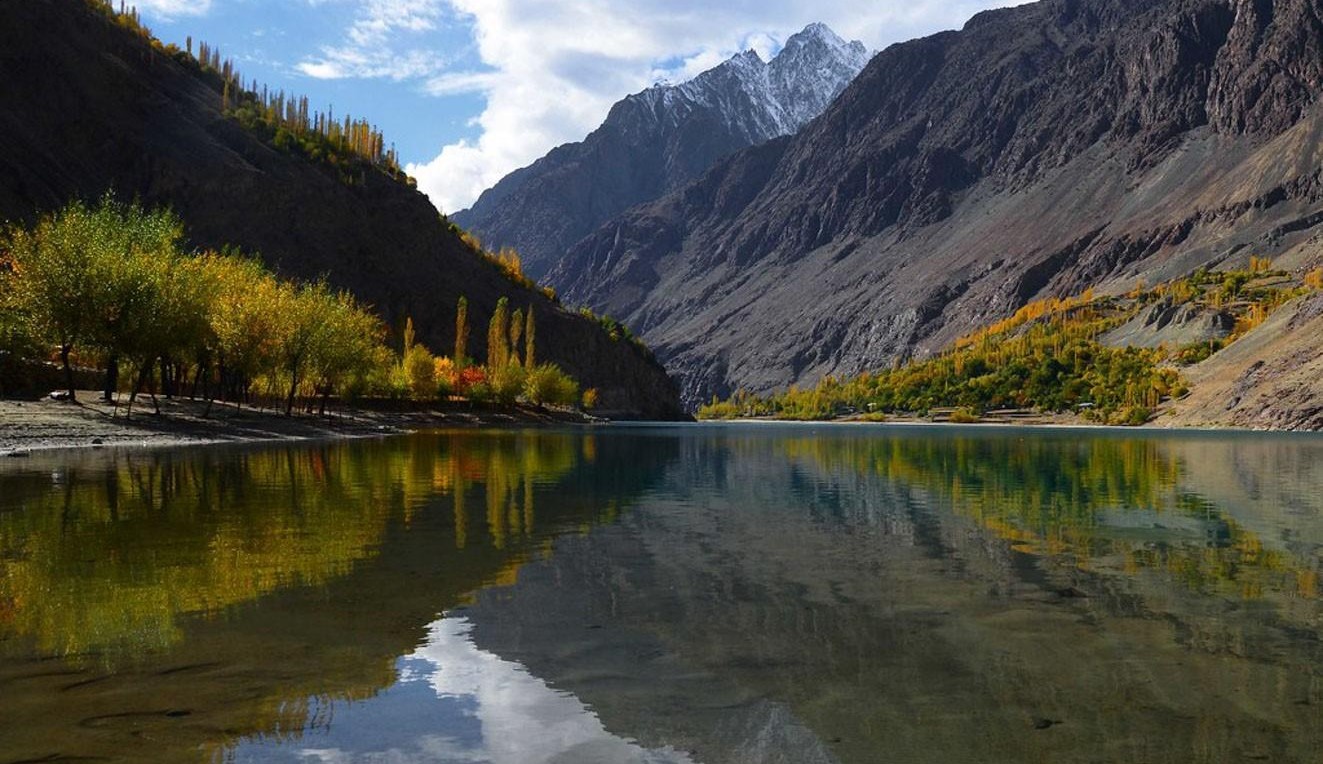
But today, the water was brown, muddy, and swollen. My heart sank a little.
“This is the biggest disappointment of this tour,” I admitted quietly. “I remember standing here years ago, watching the sun set over the blue water. It was magical.”
When I asked the locals about the change, they explained that heavy rains had mixed with glacial meltwater, turning the color muddy. Normally, the river gets its water from glaciers — pure, clear, and blue — but the rain had changed its tone.
“It will turn blue again soon,” one man said with a smile. “Give it a few days.”
I took a few drone shots, comparing the old footage with the new. The lake was still beautiful — just different. And perhaps that’s how nature reminds us that beauty isn’t constant; it’s seasonal, fleeting, and always evolving.
The Road to Phander: Night Ride Through the Valleys
As the sun dipped behind the mountains, we decided to push forward to Phander Valley, about 48 kilometers away. It was already 8 PM.
The road was narrow but manageable, though construction work made it tricky in places. We passed through silent villages, their lights twinkling faintly in the dark. Occasionally, a dog barked or a cow crossed the path — reminders that even in darkness, life continues here.
At 9:40 PM, after a long, careful ride, we finally arrived in Phander. The first hotel we saw was the same one I had stayed in three years ago. It felt like coming home.
The room was simple but clean — PKR 2,500 per night. The owner smiled and said, “By tomorrow morning, the river water will turn blue again.” I hoped he was right.
Dinner was served — a sizzling chicken karrahi with fresh roti. It was the perfect end to a long day. We hadn’t eaten much since morning, and the warmth of the food felt heavenly.
Reflections by the River
That night, as I sat outside the hotel, listening to the faint murmur of the river, I thought about the day’s journey — the drizzle in Hunza, the laughter in Danyor, the beauty of Ghizer, and the bittersweet sight of Khalti Lake.
Travel, I realized, is not just about chasing perfect pictures or destinations. It’s about embracing imperfection — the muddy waters, the broken bridges, the delays, and the changing colors of life.
Tomorrow, we would explore Yasin Valley and perhaps even Darkut, if the weather allowed. But for now, I let the night settle in. The valley was asleep, the stars were out, and the cool mountain breeze carried the scent of wet earth.
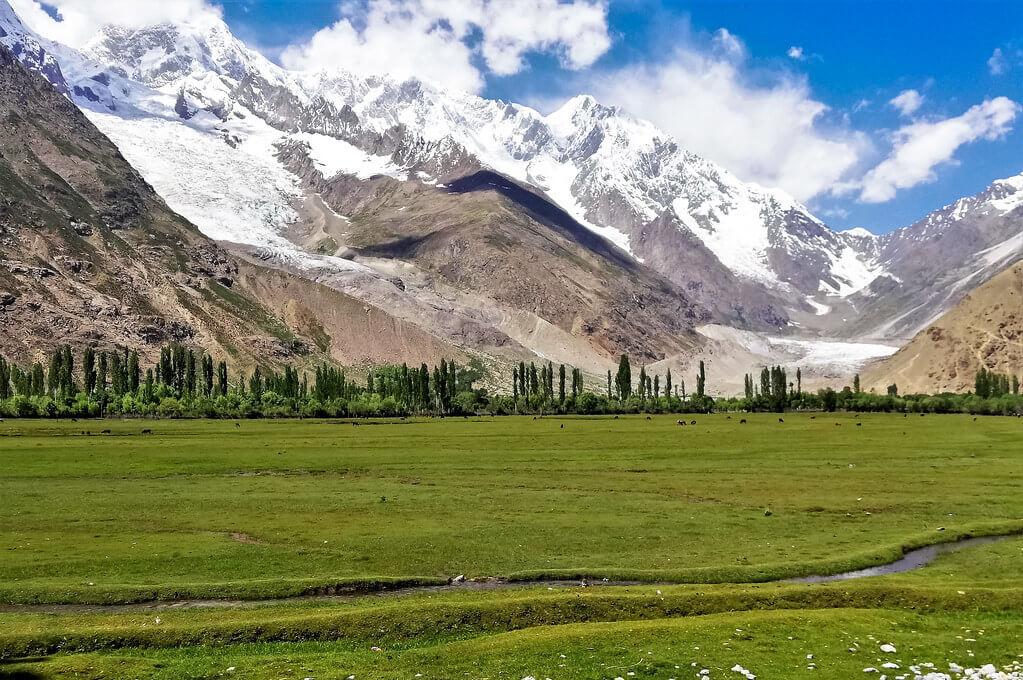
Epilogue: The Changing Colors of the North
The next morning, I woke up early to check the river. True to the hotel owner’s words, the blue had returned — faint, but visible. Nature had restored its color overnight.
It felt symbolic — as if reminding me that no matter how muddy things get, clarity always returns.
As I packed my camera, I smiled and said softly to the lens,
“Don’t forget to like, subscribe, and share — but more importantly, don’t forget to travel. Because out here, every mile teaches you something new.”
And with that, we mounted our bikes once again, heading toward the next unknown valley — ready for whatever the road would bring.








